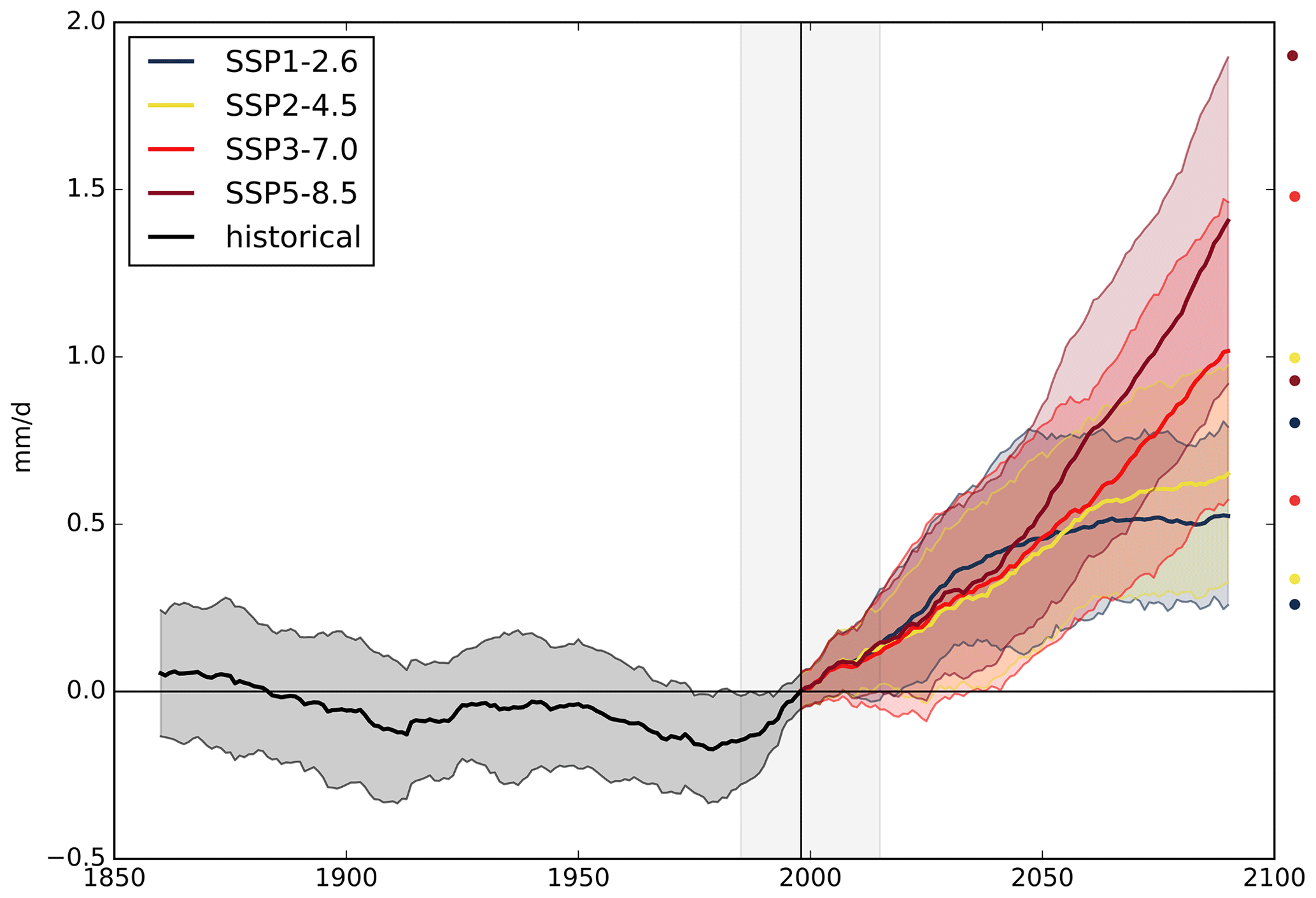15 April 2021
Changing rainfall patterns in the Indian monsoon with future warming
Posted by Dave Petley
Changing rainfall patterns in the Indian monsoon with future warming
The global landslide hotspot lies is located in South Asia, driven by the summer (SW) monsoon. The monsoon drives a period of intense and prolonged rainfall in the period centred on June to September. Rainfall levels can be high – in some cases the highest in the world. The monsoon also drives convective activity that can cause cloudbursts. Together, these effects trigger large numbers of landslides, with catastrophic outcomes.
Thus, one of the key elements in the understanding of future landslide patterns is to understand the dynamics of the monsoon with climate change – i.e. under future warming. If the monsoon is likely to intensify then we might see more landslides through time. And of course vice versa. The pattern is not simple of course; the monsoon could weaken but rainfall intensity could increase. So understanding the dynamics of the monsoon is key.
A new open access paper has just been published in the journal Earth System Dynamics (Katzenberger et al. 2021) that examines the dynamics of the Indian monsoon under future warming scenarios. To do so it examines the 32 global climate models within the Coupled Model Intercomparison Project Phase 5 (CMIP5) under a range of emission scenarios.
The results are really interesting. As the authors put it:
All of these models show a substantial increase in June-to-September (JJAS) mean rainfall under unabated climate change (SSP5-8.5) and most do also for the other three Shared Socioeconomic Pathways analyzed (SSP1-2.6, SSP2-4.5, SSP3-7.0). Moreover, the simulation ensemble indicates a linear dependence of rainfall on global mean temperature with a high agreement between the models independent of the SSP if global warming is the dominant forcing of the monsoon dynamics as it is in the 21st century; the multi-model mean for JJAS projects an increase of 0.33 mm d−1 and 5.3 % per kelvin of global warming.
These are fascinating results. Under most likely scenarios for future warming the monsoon will strength, with more rainfall on average. In graphical form the figure below displays the outcomes:

Multi-model mean of Indian summer monsoon rainfall (mm d−1) for the Indian summer monsoon for 1860–2090 relative to the mean (horizontal black line) in 1985–2015 (grey background) for the four scenarios (SSP1-2.6, SSP2-4.5, SSP3-7.0 and SSP5-8.5). The 20-year smoothed time series of one ensemble member per model was used to calculate the multi-model mean. Shading in the time series represents the range of mean plus/minus 1 standard deviation marked with circles on the right side of the figure. Image and caption (lightly edited) from Katzenberger et al. (2021).
.
Interestingly, the models project that both the west coast of India and the Himalaya region will show substantial increases in monsoon precipitation. These are the areas most affected by landslides. The models also suggest greater interannual variability, indicating that some years will be exceptionally wet.
Studies like this provide a general expectation for future behaviour. There will be nuances of course that require further investigation, such as the impacts on cloudburst rainfall and the interaction between the atmosphere and the topography. But in general terms, the models suggest that we might expect to see increased landslide activity driven by the summer monsoon with time. Coupled with the ongoing environmental degradation in the Himalayas, especially through haphazard road construction, the picture for future landslide impacts is poor. Strategies to adapt to future warming are urgently required.
.


 Dave Petley is the Vice-Chancellor of the University of Hull in the United Kingdom. His blog provides commentary and analysis of landslide events occurring worldwide, including the landslides themselves, latest research, and conferences and meetings.
Dave Petley is the Vice-Chancellor of the University of Hull in the United Kingdom. His blog provides commentary and analysis of landslide events occurring worldwide, including the landslides themselves, latest research, and conferences and meetings.
Thank you for this!